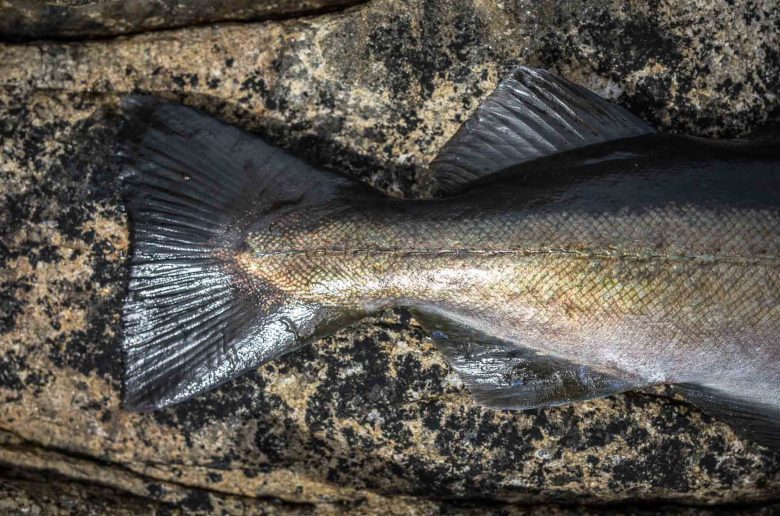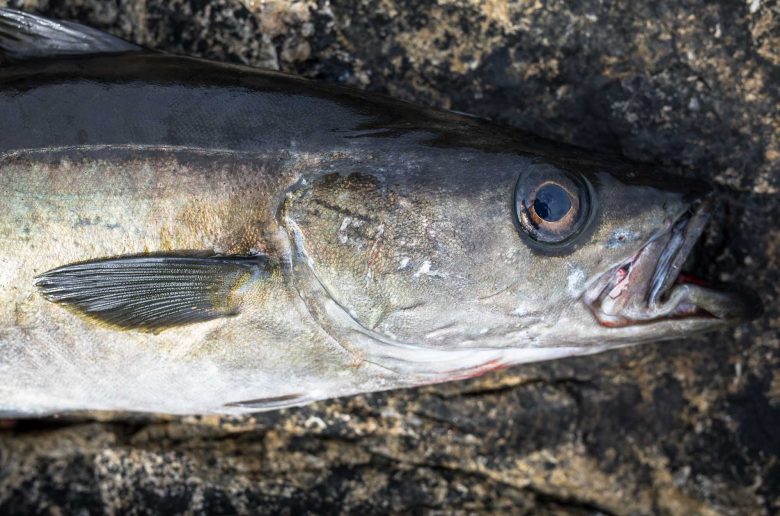(nor.: lyr; swe.: lyrtorsk; fin.: lyyraturska; dt.: Steinköhler)
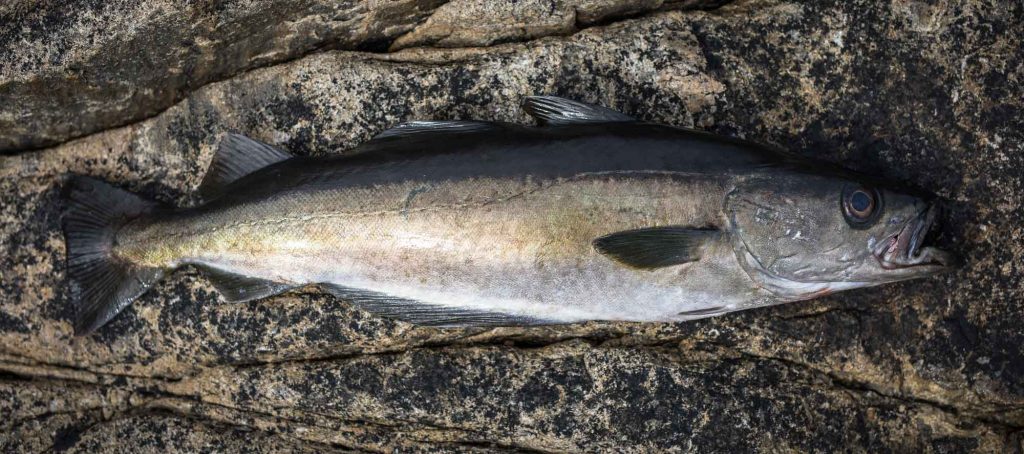
Pollack (Pollachius pollachius) is member of the cod family and often confused with its close relative, the coalfish (Pollachius virens). Specimen usualy grow to around 60-70 cm but can occasionally reach length up to 130 cm. Similar to coalfish, pollock can endure strong currents and set up a strong fight.
Fishing
When it comes to fishing, the general rule of thumb is the further north the better and bigger the pollack. Direct exposure to the Atlantic ocean is key for big specimen. If you are fishing from shore make sure to find a spot with a decent depth. Moles, Ferry piers or fishing from cliffs can produce very good results. Also other places with strong currents can be productive. Especially narrow passages in the fjords with strong tidal currents and bridges are usually favourable spots. Depths from 5 meters downwards work well. While cod linger around at the bottom, pollack can be found more in the middle layers. Traditionaly pilks or pirks are used to go after these fish. However we had even better results with decent sized soft baits.
In recent years fly fishing for pollack is also getting more and more popular. Even if this might seem a bit unusual given the size and habitat of these fish, this can be a new and challanging experience. Make sure to bring some heavy and big flies along to penetrate the right depths.
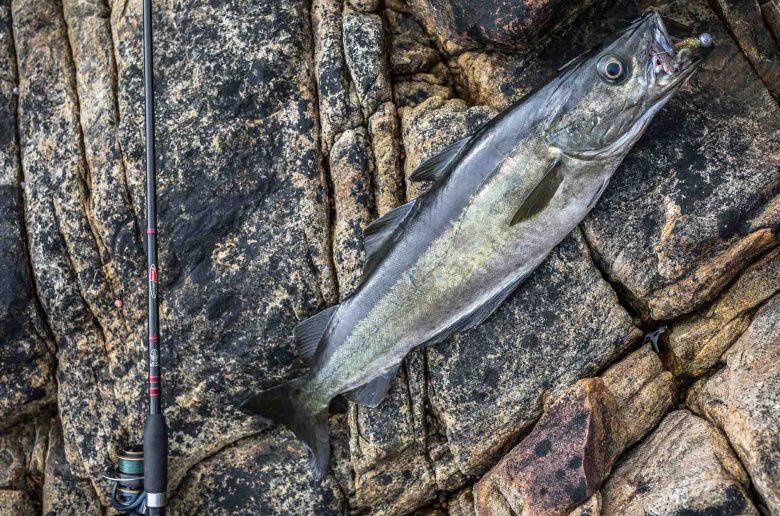
Spinning
- Sheds (20 – 50 grams)
- Sheds (50 – 100 grams)
- Jigs (50 – 100 grams)
- Jigs (100 – 200 grams)
- Pilk (50 – 200 grams)
Fly Fishing
- big weighted streamer flies
- generally all weighted flies will do
Angling Record
- Finland: N/A
- Sweden: N/A
- Norway: 10,8 kg (shore)
Appearance
The habitus of pollock is similar to that of the coalfish, with an upper mouth and three dorsal and two anal fins. In contrast to its relative, however, the lateral line of the pollack shows an arched course over the pectoral fins. The lower jaw has no barbels. The back is of darker colour, brown or olive, the side line is greenish and the abdomen shows a silvery-gray colour.
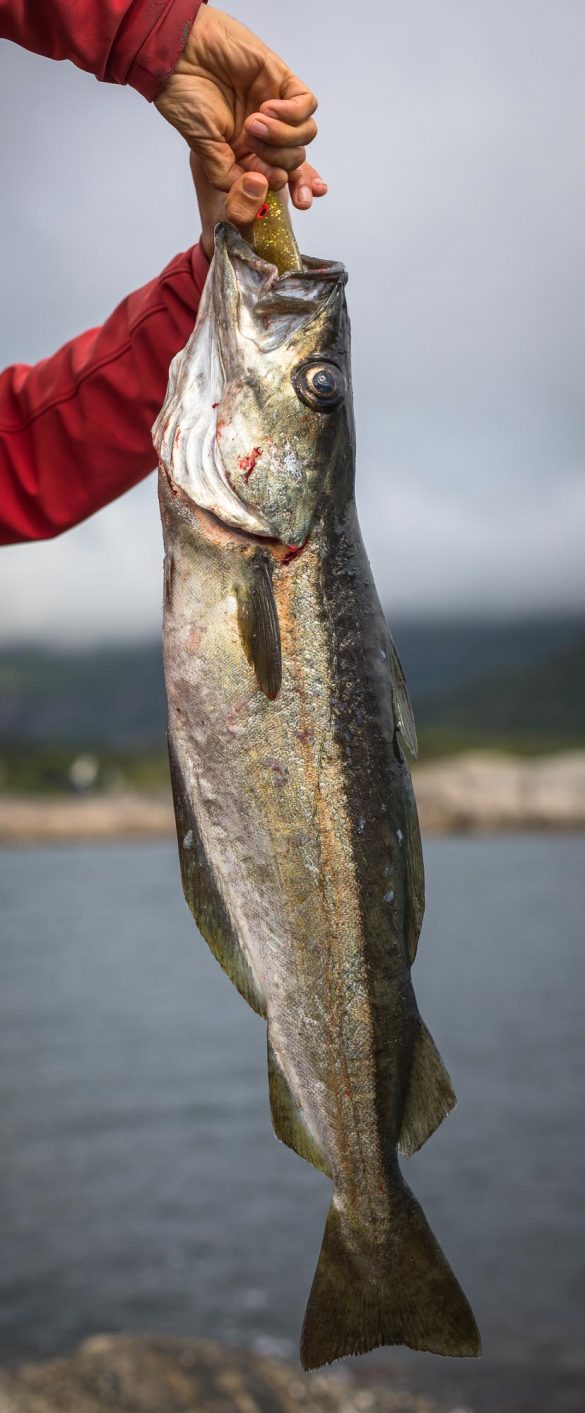
Feeding and habitat
The schooling fish feeds mainly on smaler fish like herring, deep-sea shrimp and sand eels. In the mating season, which lasts from January to May, the animals spawn at depths of 100 to 150 meters at water temperatures of six to eight degrees Celsius. The fry, which initially eat plankton, spend their first two to three years of life near the coast and often form schools of the same size.
